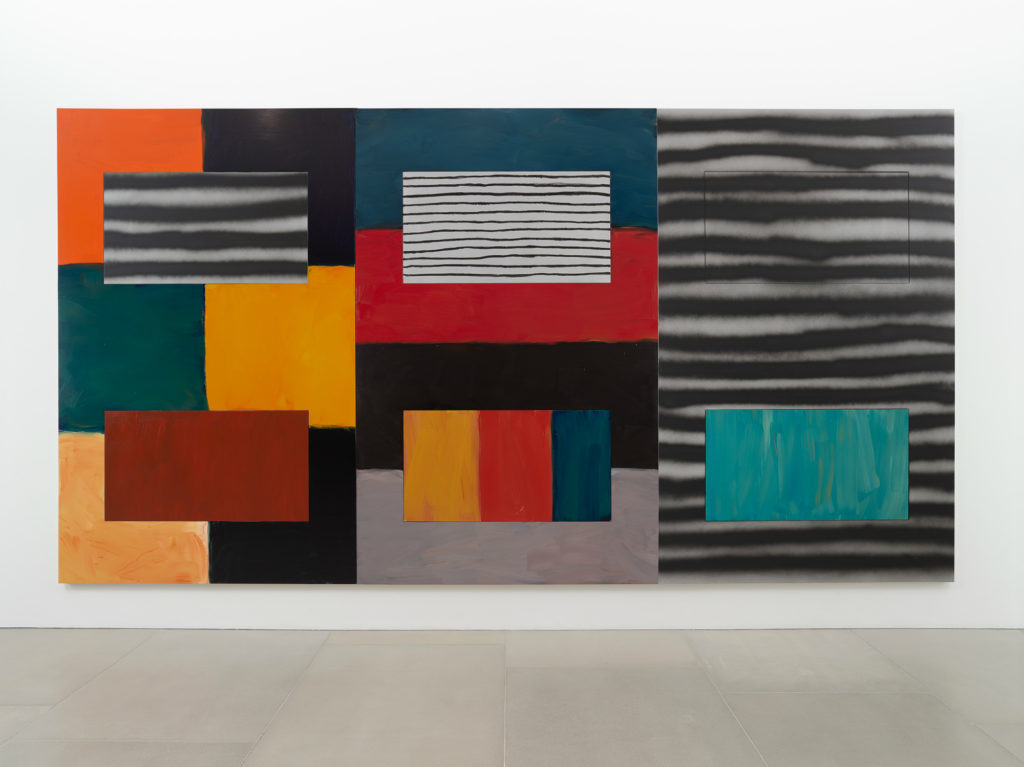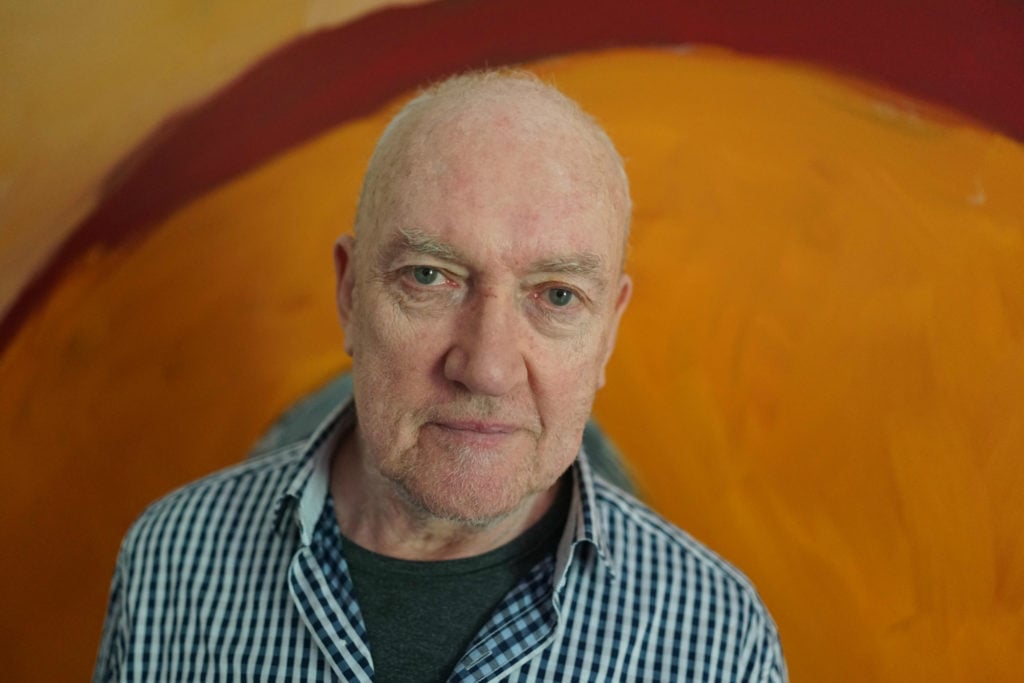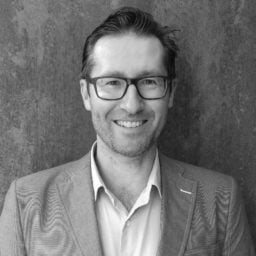The sun has not yet set on Sean Scully’s exhibitions this year. The artist has no less than 10 museum exhibitions worldwide, from Hubei in China to the Hirshhorn in Washington, DC, to three concurrent shows the UK. Next year, his works go on view alongside paintings he has long admired—including J.M.W. Turner’s melancholic seascape Evening Star and works by Van Gogh and Degas—in London’s National Gallery.
“I like the Turner because his dad was a barber and my dad was a barber,” he tells artnet News. “The seascape reminds me of a walk I had with my dad, which was a very special moment because he was very distant.” Scully compares the bittersweet experience of that day on a beach along the south coast of England to walking into a Romantic painting. “Turner had a better relationship with his father than I had,” he adds.
The Dublin-born artist, who grew up in one of south London’s roughest areas, made his name in New York with his large-scale, abstract geometric canvases. However, in the future, he plans to spend less time in the US and more time in Germany and the UK. He cites the welfare of his young son and a fear of America’s growing gun culture. “The job of a teenager is to go against the rules. In America, that is too dangerous,” he says. “Teenagers get shot.”
But Scully has no plans to abandon the city, his studios, and his home in Rockland County, New York. He will be returning every school vacation. “I love New York, it produces one fantastic artist after another,” he says.
Best known for his paintings, often created by joining different canvases, Scully has recently returned to making abstract sculpture. He has also added figuration to a few canvases. For instance, he painted a handgun in the top corner of Ghost 2 (2018). “Now bullets are sprayed into American streets, like rain, and its children fall, becoming ghosts,” he writes in an Instagram post. “The land of the free [is] a ghost of what it once promised to be.”
Indeed, Scully is no stranger to politics. The artist has always been politically engaged, he tells artnet News. As a teenager, he did more than just visit the National Gallery in Trafalgar Square; he attended many demonstrations on its doorstep. “I used to go and listen to Bertrand Russell, a great orator. We would be enthralled,” he recalls. “I used to make posters for CND [Campaign for Nuclear Disarmament]. We railed against apartheid. That was when Trafalgar Square meant something idealistic. I’m sorry to see it now full of low-life buskers,” he says.
The artist is no fan of the US president, but he does agree with Donald Trump on a couple of things. One is the “horrific” design of the new US Embassy in London, where Scully recently completed a mural. “I gave them a super hard time,” Scully says. “I hate the military, I hate all the four stars and epaulets. As I left, I said to the [security] guys ‘It’s been real… really oppressive.’” The artist also says that Trump has a very understanding wife: “So, we agree on two things.”
There are other reasons for Scully to return to the UK besides the US Embassy commission. He has a solo commercial show in London, his first at Blain|Southern, and his sculptures and paintings are now on view at the Yorkshire Sculpture Park in the North of England. “It is perhaps equal with my show at the Met as the most important show of my life,” he says. “I’m incredibly fond of that place.”
Scully’s early paintings have also traveled from the Laing Gallery in Newcastle, where he studied fine art at the city’s university, to Liverpool’s Walker Art Gallery, which also holds a special place in the artist’s heart. If he ever had a UK retrospective, he would like it at the Walker, not in London, he says.
In 1974, the jury of Liverpool’s John Moores Prize created a special fourth prize and awarded it to Scully for his vibrant canvas Subtraction Painting. “The John Moores was what the Turner Prize became,” Scully recalls. “And the £500 prize was worth a lot of money.”
His painting appeared in the Guardian newspaper and within a couple of years, he had his first solo show in London’s Rowan Gallery, which sold out. “I was the original YBA,” he declares.

Sean Scully, What Makes Us Too (2017). Courtesy of the artist and Blain|Southern, photo by Peter Mallet.
There is now a John Moores Painting Prize in China, a country that has proved highly receptive to Scully’s work. He has had several solo shows in the country, including two touring surveys. This year, his global exhibitions include one at the Hong Kong Art Center. “I seem to have become desirable,” he says.
That was not always the case. When the artist started painting more austere and monochrome canvases, collectors were less than enthusiastic. “I couldn’t give them away,” he says. “But now they can’t have them. You can only buy new works.”
Scully can give works away to museums, but he finds it impossible to give up his monochrome works. “I can’t sell them. People try and buy them but I can’t do it,” he says.
Looking back on how the art world has exploded over his lifetime, Scully says that it has become a “huge machine.” He says that it is driven by media exposure. For someone who left school at 15 to become an apprentice typesetter, working in hot metal, the rise of digital media has been extraordinary. But rather than bemoan it, the artist has embraced technology. With delight, he calls his iPhone his portable “office.”
“When I was a kid, growing up in [London’s] Old Kent Road, I was pre-electric. We had gaslight,” he recalls. “We didn’t even have electricity in the street. That kind of dull light is still in my paintings.”
“Sean Scully: 1970,” July 14 through October 14, Walker Art Gallery, Liverpool.
“Sean Scully: Landline,” September 13 through February 3, 2019, Hirshhorn Museum, Washington, DC.
“Sean Scully: Inside Outside,” September 29 through January 6, 2019, Yorkshire Sculpture Park, Wakefield.
“Sean Scully: Uninsideout,” October 3 through November 17, Blain|Southern, London.







